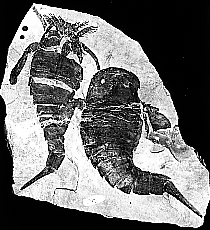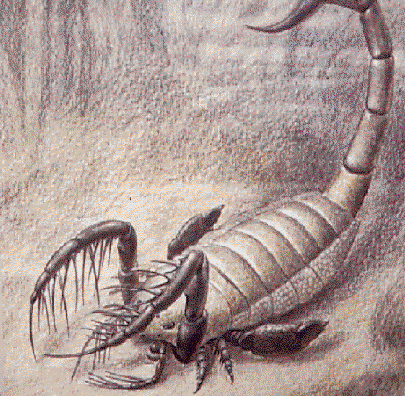Eurypterida
"Sea scorpions"


The eurypterids were among the largest and most fearsome marine predators of the Paleozoic; some reached six feet (two meters) in length. They arose in the Ordovician, and the last ones went extinct in the Permian. Most have been found in rocks that were laid down in brackish water or freshwater; some may have lived in the sea, and eurypterids may have spent at least short intervals on land.
The specimen figured at the top of this page, Eurypterus, is from the Silurian of New York state, USA (the fossil Eurypterus remipes was adopted as the state fossil in 1984). Below is a reconstruction of Mixopterus from Scandinavia, from the displays of the Paleontological Institute in Moscow, Russia.

View Lepidoderma mazonense, a fossil eurypterid from Mazon Creek, Illinois. Brought to you by the Illinois State Museum. And see some fossils of eurypterid tails from Kansas in Rich Leizler's Kansas Fossils site.
Jason Dunlop of the University of Manchester has reported finding slit-like structures and book lungs on some eurypterid fossils. Such structures are today known only in arachnids.

Source: Stormer, L. 1955. Merostomata. pp. P4-P41 in Moore, R.C. (ed.) Treatise on Invertebrate Paleontology. Part P: Arthropoda 2: Chelicerata. Geological Society of America and University of Kansas Press, Lawrence, Kansas.

